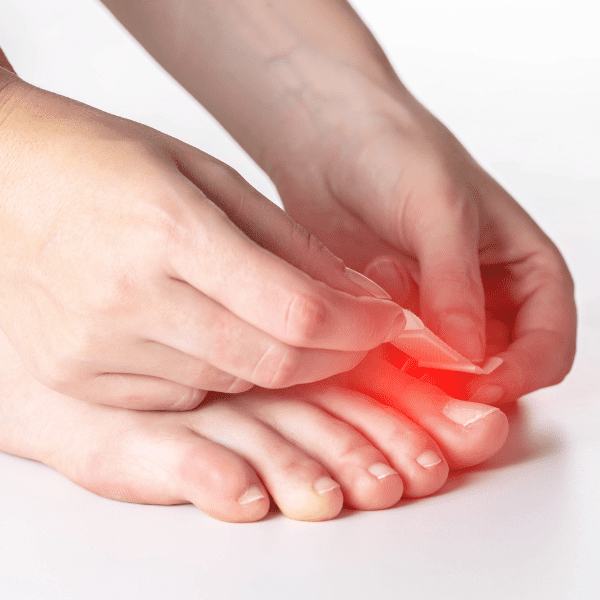Causes and Symptoms
Plantar warts are caused by direct contact with HPV, a virus that thrives in warm, moist environments such as public showers, locker rooms, and swimming pools. The virus enters the skin through tiny cuts, abrasions, or weak spots on the feet. While anyone can develop plantar warts, they are more common in children and teenagers, individuals with weakened immune systems, and those who frequently walk barefoot in communal areas.
The primary symptom of plantar warts is a small, rough, grainy growth on the bottom of the foot, often with a black dot in the center, which is a clotted blood vessel. These warts can be painful, especially when pressure is applied, such as during walking or standing. In some cases, plantar warts on feet treatment multiple warts may cluster together, forming a mosaic wart.
Diagnosis
A healthcare provider can usually diagnose plantar warts through a physical examination. They may scrape the wart to check for dark, pinpoint dots (clotted blood vessels) or remove a small section of the wart to send for analysis if the diagnosis is uncertain. It's essential to differentiate plantar warts from other foot conditions like calluses or corns, which require different treatments.
Treatment Options
While some plantar warts may disappear on their own within a couple of years, many require treatment due to pain, discomfort, or cosmetic reasons. Here are several effective treatment options:
Over-the-Counter Treatments: Many people start with over-the-counter (OTC) treatments, such as salicylic acid preparations. These treatments gradually peel away the wart. It's essential to follow the instructions carefully and protect the surrounding skin to avoid irritation.
Cryotherapy: Cryotherapy involves freezing the wart with liquid nitrogen, causing it to blister and eventually fall off. This treatment is often performed by a healthcare provider and may require several sessions. While effective, it can be painful and may cause temporary changes in skin color.
Prescription Medications: If OTC treatments fail, a doctor may prescribe stronger medications. These can include higher concentrations of salicylic acid or other topical agents like imiquimod, which stimulates the immune system to fight the wart.
Laser Treatment: Laser therapy uses an intense beam of light to destroy the wart tissue. This method is generally reserved for stubborn warts that do not respond to other treatments. It can be costly and may require multiple sessions.
Minor Surgery: In severe cases, minor surgery may be necessary to remove the wart. A doctor may use a scalpel to cut out the wart or use electrosurgery (burning the wart with an electric current). Surgery can be effective but carries the risk of scarring.
Home Remedies: Some individuals opt for home remedies such as duct tape occlusion therapy, where duct tape is applied to the wart for several days, foot doctor pembroke pines, followed by soaking and gentle scrubbing. Though the evidence is mixed, some find this method helpful.
Prevention
Preventing plantar warts involves avoiding direct contact with HPV. Here are some tips to reduce the risk:
Wear Flip-Flops or Shower Shoes: Protect your feet in communal areas like showers and pools.
Keep Feet Clean and Dry: Wash your feet regularly and keep them dry to prevent the growth of bacteria and viruses.
Avoid Sharing Personal Items: Do not share socks, shoes, or towels with others.
Check Feet Regularly: Inspect your feet for any unusual growths and seek prompt treatment if you notice any changes.





Comments